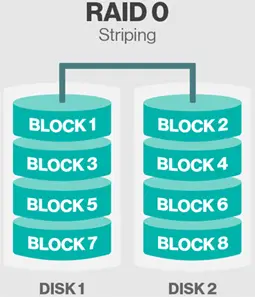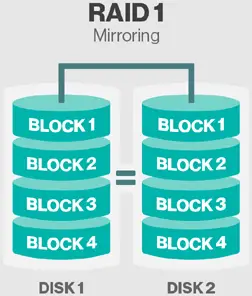
I am currently assembling my own pc. I heard of a way to combine the writing speed of two hard disks. Can you please walk me through the process of establishing a raid between two hard disks of the same make. Is it true that such a procedure doubles the writing speed?
Procedures to implement a raid system in homemade PC

RAID stands for Redundant Array of Independent Disks. It offers one method of storing the same data in various locations on multiple hard drives. By putting data on numerous hard drives, the I/O operations or input/output operations can overlap in a balanced way which then improves the performance.
Because multiple disks raise the MTBF or the Mean Time Between Failures, the fault tolerance is increased when you store data redundantly. RAID can offer higher availability and better storage performance and there are different types.

RAID 0 – this RAID type is also called disk striping. In this type, all data are distributed in chunks across all the disks in the RAID set. This offers great performance because you distribute the load of storing data into more physical drives. Since this type doesn’t generate parity, you don’t have overhead to write data to RAID 0 disks.
This RAID type is good only for performance but not for high availability because it doesn’t have parity. To use RAID 0, you need at least two physical hard drives.

RAID 1 – this RAID type is called disk mirroring. In this type, the data is written to at least two separate physical drives. The disks are basically mirror images of each other. If one disk fails, data can still be retrieved using the other disk or disks.
RAID 1 is good for very fast read operations but it is slower when writing data to the disks because data needs to be written twice. To use RAID 1, you need at least two physical drives. For the rest of the types, visit RAID Types Explained.















